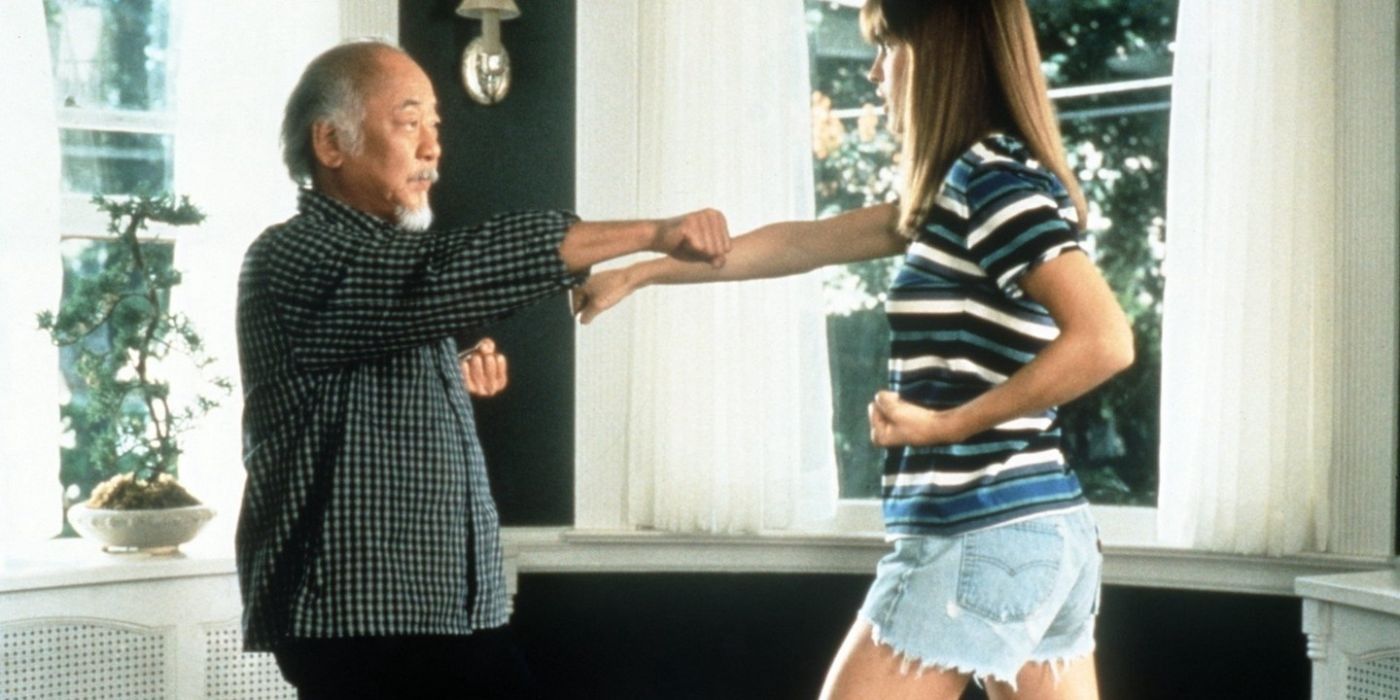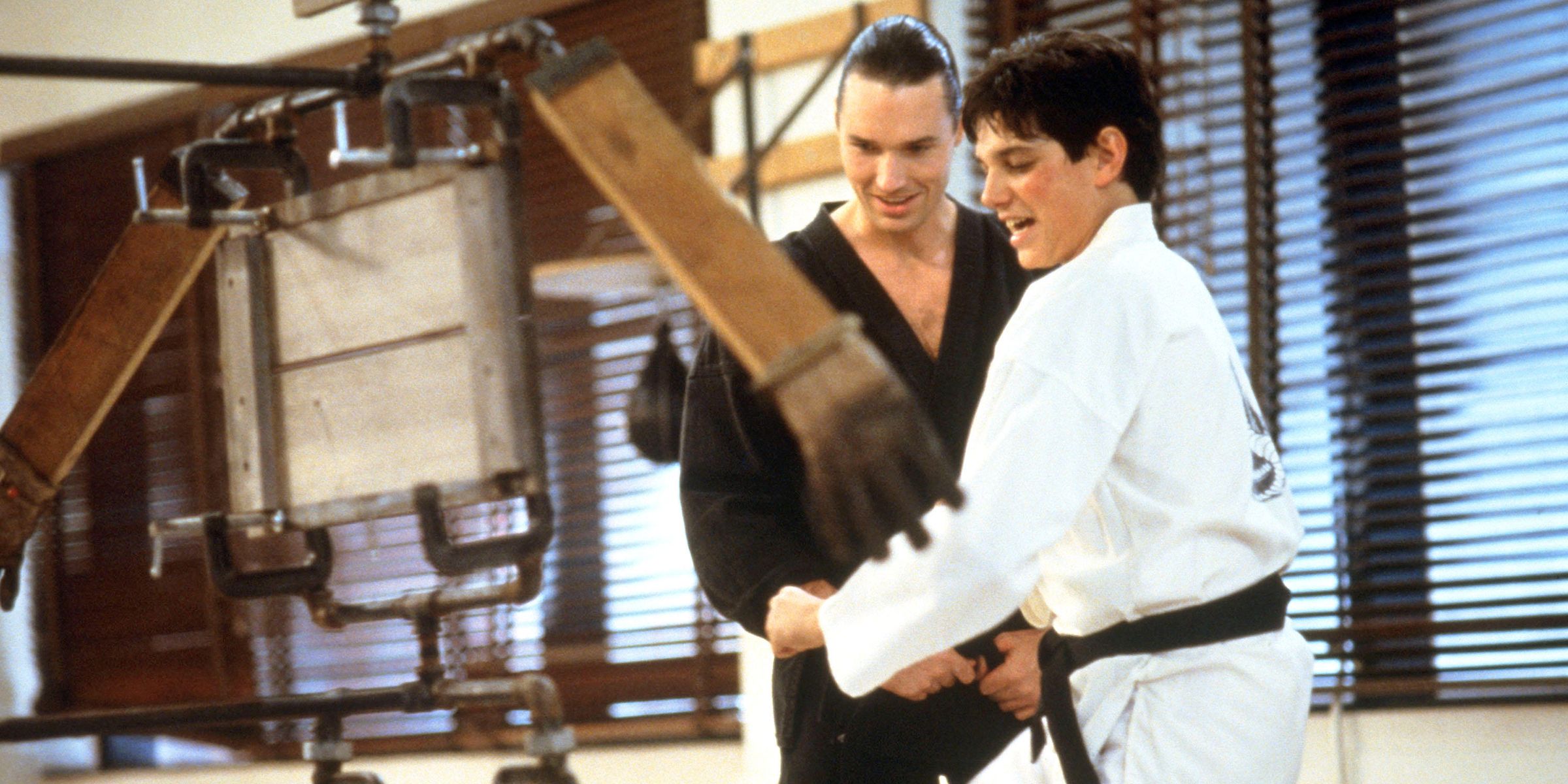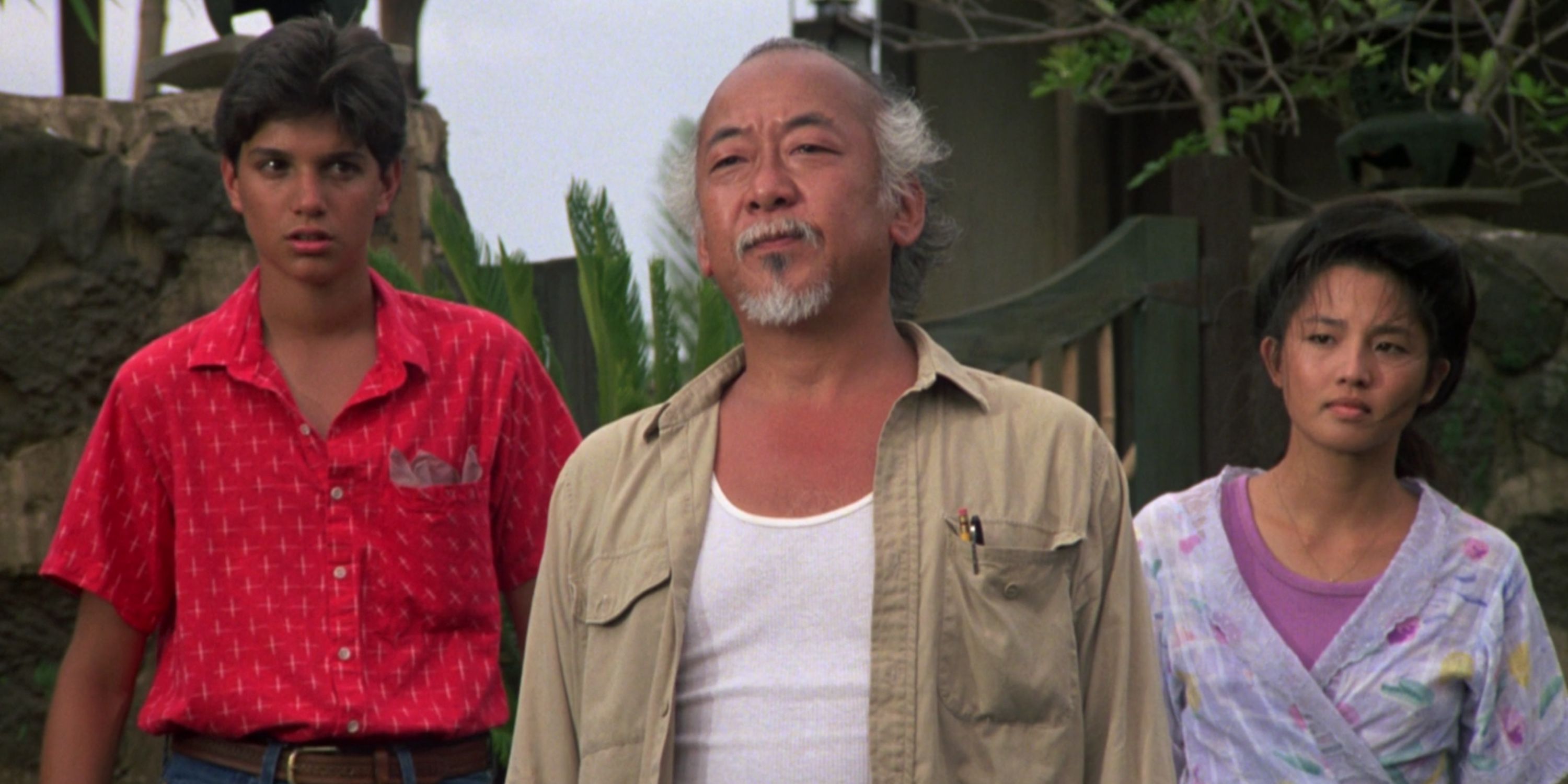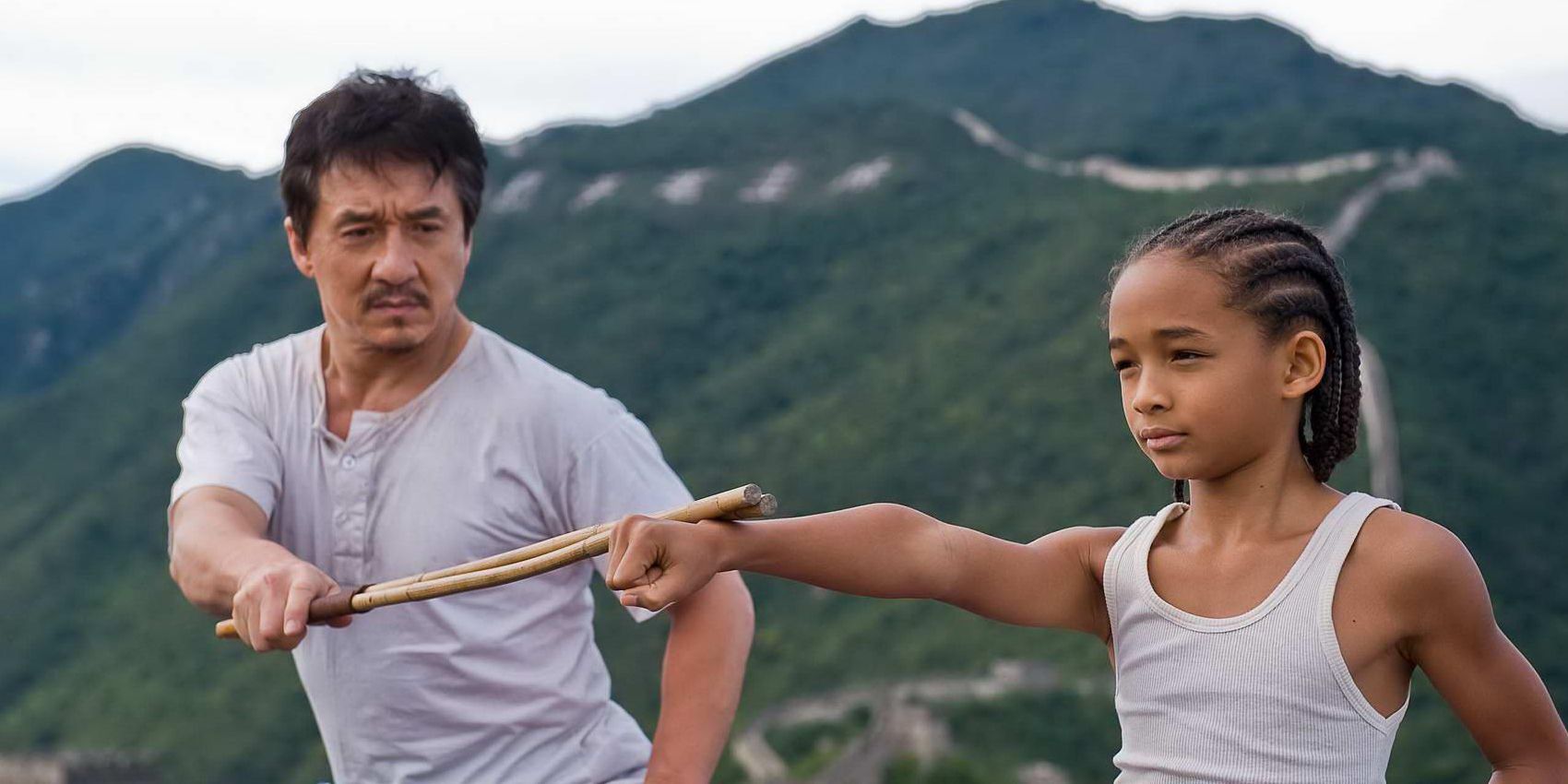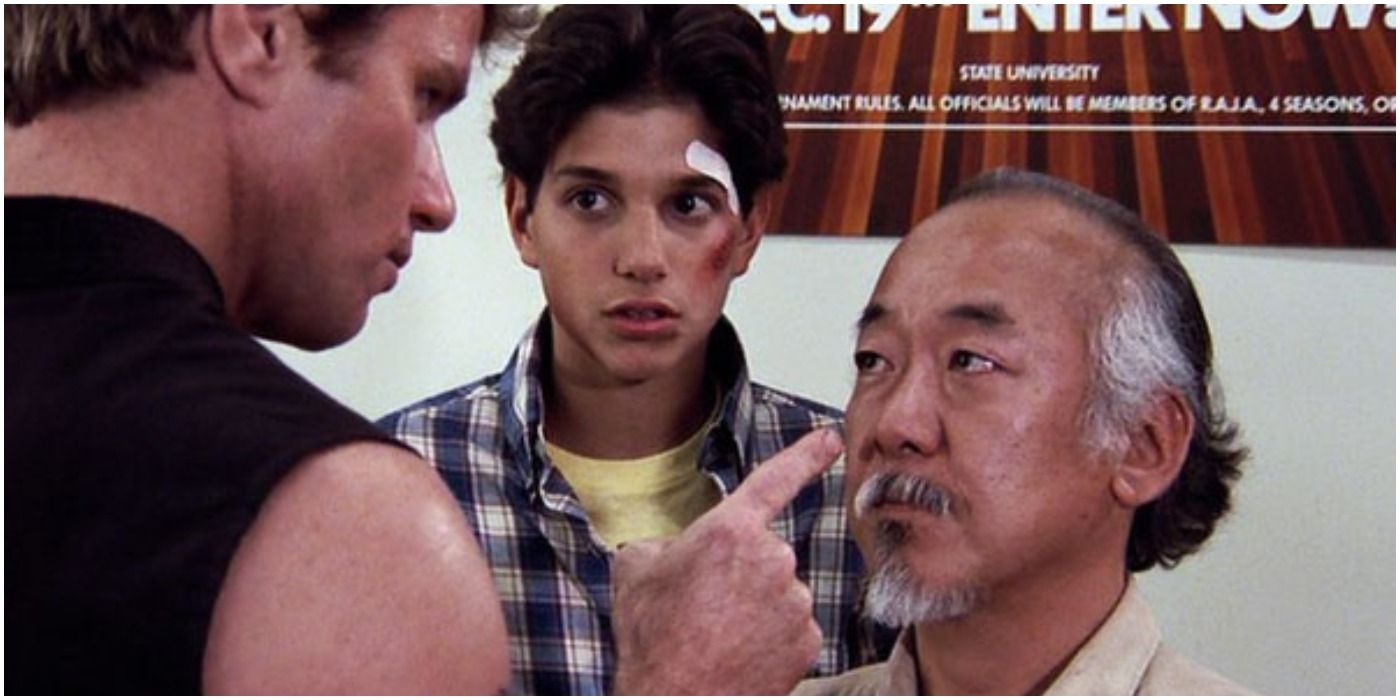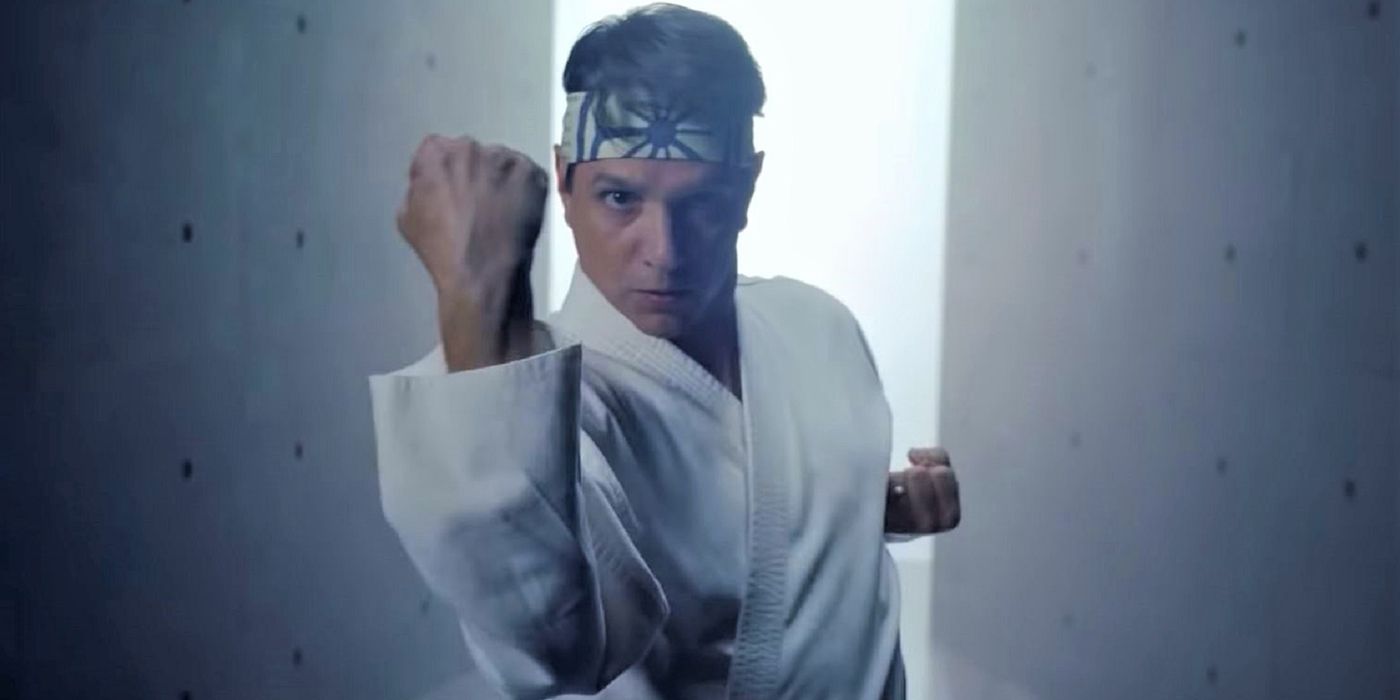[ad_1]
The Karate Kid movie franchise spans five films, including sequels and a remake, and here are all of them ranked from worst to best. The first of The Karate Kid movies introduced the characters of Daniel LaRusso (Ralph Macchio) and his karate sensei/best friend Mr. Miyagi (Noriyuki “Pat” Morita), who are now among the most beloved movie heroes in pop culture, and their dynamic continued for two more films, 1986’s The Karate Kid Part II and 1989’s The Karate Kid Part III. Morita then headlined 1994’s The Next Karate Kid without Macchio but alongside a new co-star, Hilary Swank, who played Julie Pierce, Mr. Miyagi’s second student. 16 years later, The Karate Kid brand was resurrected for a 2010 remake that starred Jaden Smith and Jackie Chan, which marked the end of The Karate Kid movies (for now).
However, just as crucial to The Karate Kid movies enduring success was Cobra Kai, Daniel’s enemy dojo, which returned — along with LaRusso’s teenage rivalry with Johnny Lawrence (William Zabka) — in a highly successful and critically acclaimed TV series that began on YouTube Red and continues on Netflix. Cobra Kai cemented The Karate Kid‘s legacy and inspired a new generation to rediscover the films. What they ultimately find is that The Karate Kid movies have varying levels of quality, and some are more beloved than others. However, The Karate Kid movies continue to stand the test of time, and one of the films is unequivocally the best around.
5 The Next Karate Kid (1994)
The Next Karate Kid was the final film to star Pat Morita as Mr. Miyagi, but without Ralph Macchio as Daniel LaRusso. Also known as The Karate Kid Part IV, future Academy Award-winner Hillary Swank was introduced in her breakout role as Julie Pierce, a troubled Boston teenager who Mr. Miyagi takes responsibility for. It’s also the first of the Karate Kid movies not directed by John G. Avildsen or written by Robert Mark Kamen. The plot involves Mr. Miyagi learning that Julie Pierce, the granddaughter of his late World War II Army comrade, already knew some Miyagi-Do karate, so the sensei decides to continue her training and teach her important life lessons. The Next Karate Kid also stars Michael Ironside as the villain, Col. Paul Duga, and Walton Goggins has a small role as one of the Alpha Elite, the film’s stand-ins for Cobra Kai as bad guys.
Despite the charm of Miyagi and Julie’s relationship and the athletic gusto Swank brought to her role, The Next Karate Kid takes the lowest spot of The Karate Kid movies ranked. The Next Karate Kid features characters that aren’t very well fleshed out and includes increasingly absurd stakes. The film culminates in a predictable brawl between the Alpha Elite, Julie, and her boyfriend, Eric McGowen (Chris Conrad) which mimes the beginning of The Karate Kid Part II. The defeated Alpha Elite turn their backs on Col. Dugan, just like the Cobra Kai did to John Kreese (Martin Kove) in the second Karate Kid, and Dugan is humiliated by Miyagi the same way Kreese was.
The Next Karate Kid does introduce an interesting new element of Buddhist monks whose monastery Miyagi takes Julie to for training, but the monks are played for comedy instead of deepening the audiences’ philosophical understanding of Miyagi-Do karate. The Next Karate Kid was a critical and financial failure upon its release in 1994, but there is still enjoyment to be found watching Mr. Miyagi train Julie-san while lamenting that “boys are easier.”
4 The Karate Kid Part III (1989)
The Karate Kid Part III was released in 1989, and it was the final and, easily, the worst chapter of Daniel LaRusso’s movie saga. Fresh from a summer in Okinawa with Mr. Miyagi, the young Daniel LaRusso returns to Los Angeles and finds himself embroiled in a diabolically ridiculous plot by John Kreese and his best friend, multimillionaire Terry Silver (Thomas Ian Griffith), to ruin LaRusso’s life and force him to defend his karate championship in order to bring the Cobra Kai dojo back to prominence. Daniel-san’s relationship with Mr. Miyagi is tested like never before, and he even abandons his sensei as LaRusso briefly joins Cobra Kai before he comes to his senses. The Karate Kid Part III has a similar ending to the original film, but this time, Daniel’s predictable triumph lacks the same impact or exhilaration.
The mustache-twirling villainy of Terry Silver is entertainingly over-the-top, which is part of why his return in the Cobra Kai series is welcomed. His scheme against LaRusso, however, is nonsensical. Equally cartoonish is Daniel’s new rival, “Karate’s Bad Boy” Mike Barnes (Sean Kanan), who engages in a level of harassment against Daniel and his new (platonic) female friend Jessica Andrews (Robyn Lively) that should have called for police intervention.
The biggest issue with The Karate Kid Part III is Daniel-san himself; LaRusso has never been more temperamental, irrational, and unlikeable, and Macchio (who was 28) was obviously too old to still be playing 18-year-old Daniel. However, Pat Morita reliably brings a great performance as Miyagi, who silently mourns how far Daniel-san has fallen before he saves his pupil once more. The audience appeared to begin to be tiring of the Karate Kid movies by the release of The Karate Kid Part III, which grossed a meager $38.9-million. It took 30 years for Daniel to make his comeback thanks to Cobra Kai.
3 The Karate Kid Part II (1986)
Released in the summer of 1986, The Karate Kid Part II admirably wasn’t a clone of the original; instead, the focus shifts to Mr. Miyagi, who is accompanied by Daniel back to his hometown in Okinawa to visit his dying father. The visit also reignites his lifelong rivalry with Miyagi’s former best friend Sato (Danny Kamekona). LaRusso also gets an appealing new love interest in Kumiko (Tamlyn Tomita) and an unforgettable new enemy in Sato’s nephew, Chozen (Yuji Okumoto).
The Karate Kid Part II revealed the origin of Miyagi-Do karate and increased Daniel-san’s martial arts abilities, which culminates in a brutal fight with Chozen that irreversibly escalated the level of violence of The Karate Kid movies beyond the controlled confines of karate tournaments.
The Karate Kid Part II isn’t the equal of the first movie, but it deepens the friendship between Daniel-san and Mr. Miyagi while also introducing crucial new elements to the mythos. The film was shot in Hawaii, which doubled for Okinawa, and yet it’s strange (but convenient for LaRusso and the audience) that despite being back home, Miyagi and Sato exclusively converse with each other in broken English instead of Japanese.
The love story between Daniel and Kumiko doesn’t quite live up to the lyrics of the film’s chart-topping theme song, “Glory of Love” by Peter Cetera (which was originally intended for Rocky IV), but LaRusso’s animosity with Chozen has palpable danger and life-or-death stakes. The Karate Kid Part II was an even bigger box office success than the original, earning $115-million worldwide, which made it one of the highest-grossing films of 1986.
2 The Karate Kid (2010)
2010’s The Karate Kid accomplishes the miraculous feat of being a remake that’s almost as good as the original (and it’s actually even better in certain ways). Starring Jaden Smith as Dre and Jackie Chan as his mentor, Mr. Han, The Karate Kid title is a total misnomer used purely for marketing since the film was shot almost entirely in China (including the Forbidden City) and is about kung fu, not karate. The Karate Kid 2010’s story is a beat-for-beat echo of the 1984 original, but that turns out to be positive.
In the remake, Dre is a 12-year-old American in China who finds himself bullied by a kung fu gang and is rescued by his building’s handyman, who happens to be a reclusive martial arts master. Mr. Han trains Dre in an unorthodox manner to fight in a tournament he eventually wins, and he forms a genuine bond with his pupil. Dre also gets a love interest named Meiying (Wenwen Han).
Against all odds, The Karate Kid 2010 succeeds by being true to the core essence of the original film while creating winning characters in its own right. Jaden Smith is a charismatic and likable lead as Dre, but Kung-fu master Jackie Chan delivers a remarkably resonant dramatic performance as Mr. Han, who has his own demons he overcomes through his friendship with the American boy. The kung-fu in the film is truly impressive and light years beyond anything in the prior Karate Kid movies, and the remake also finds novel ways for Mr. Han and Dre to flip the classic tropes of how Mr. Miyagi trained Daniel.
The Karate Kid 2010 received generally favorable reviews, and it never got a sequel, but it earned $358 million worldwide, which makes it the highest-grossing film of The Karate Kid franchise. However, it exists outside the “Miyagi-verse” and it isn’t considered canon by the producers of Cobra Kai.
1 The Karate Kid (1984)
The Karate Kid is one of the most beloved and inspirational sports movies. While it borrows aspects of the formula of the Rocky movies, as well as Rocky‘s Oscar-winning director, John G. Avildsen, 1984’s The Karate Kid‘s enduring heart and soul is the bond between Daniel LaRusso and Mr. Miyagi.
The plot is now legendary: Daniel moved from New Jersey to Los Angeles and became rivals with Cobra Kai’s Johnny Lawrence after he began dating Johnny’s ex-girlfriend, Ali Mills (Elisabeth Shue). After being ganged up on repeatedly, Miyagi trains Daniel-san to compete in a karate tournament, which he wins by defeating Johnny. 40 years later, The Karate Kid remains an eternally satisfying story filled with characters who have gone on to become pop culture icons, and their story is being continued and expanded upon in Cobra Kai.
Many of The Karate Kid‘s famous tropes have continued to resonate. The film is fondly remembered for Miyagi’s ingenious methods of training Daniel by making him perform household chores like painting a fence and sanding the floor — of course, “wax on, wax off” is eminently quotable — and Daniel’s climactic crane kick that he used to defeat Johnny is iconic. The performances by Pat Morita and Ralph Macchio remain touching and powerful.
William Zabka was underrated as Johnny, although Cobra Kai has realized his full potential. It’s incredible how three sequels, a remake, and a hit TV series were all built fromThe Karate Kid, which speaks to the original film as a true classic of the 1980s — one that still connects with generations of fans, new and old, as the springboard for Cobra Kai and it’s characters.
Is Cobra Kai Better Than Karate Kid?
Even though The Karate Kid movies are great films, they’ve been surpassed by the success of the Netflix series Cobra Kai. The beauty of Cobra Kai is that it’s essentially an unexpected comeback story. Rather than initially focusing on Daniel LaRusso, the TV show zeroes in on the former bully and antagonist of The Karate Kid, Johnny Lawrence. It follows Johnny as he reclaims his humdrum life and tries to restore Cobra Kai to its former glory. A lot happens in the series, including Johnny losing Cobra Kai to John Kreese and being forced to start his own dojo.
What makes Cobra Kai’s success particularly surprising is that no one expected a Karate Kid series to choose Lawrence over LaRusso. The series picks up 34 years later and explores how LaRusso and Lawrence’s lives intertwine in the future, with both running dojos of their own and passing on their former rivalry to their students. Cobra Kai has had Netflix audiences hooked since season 1 with its multitude of high-action karate battles between kids and adults alike. Another reason that Cobra Kai is so appealing is that it brings back a ton of Karate Kid characters, such as Chozen, Kumiko, Ali Mills, John Kreese, and Terry Silver.
Cobra Kai essentially recontextualizes the Karate Kid movies as the beginnings of a wider story by showing Daniel and Johnny as adults. This has spouted new fan theories, such as Daniel actually being the bully of the franchise. The series itself has garnered so much popularity that The Karate Kid movies could technically be considered Cobra Kai prequels, providing a new and interesting way to enjoy the franchise.
It’s not as tricky as it should be to determine which is better — The Karate Kid or Cobra Kai given how beloved The Karate Kid movies are. Both audiences and critics seem to be in agreement that Cobra Kai has surpassed its origins. Based on the Metacritic database, the original Karate Kid holds a rating of 60, whereas the first season of Cobra Kai has a rating of 72, with season 4 breaking the record at a whopping 80. It’s true, The Karate Kid movies are 1980s classics well worth the watch, but Cobra Kai clearly outperforms them.
[ad_2]
Source link

